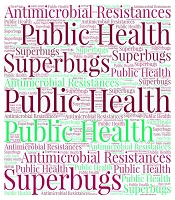Dear Editor,
The rapid rise of antimicrobial-resistant bacterial infections has reached a critical level, jeopardizing global health and food security. This silent pandemic requires urgent attention, as antibiotic resistance knows no borders, age, or gender, affecting anyone, anywhere. According to the World Health Organization (WHO), antimicrobial resistance (AMR) is ranked among the top three major public health threats. Antimicrobial resistance is among the third leading causes of death worldwide. Alarmingly, in 2019, AMR accounted for approximately 1.27 million direct and 5 million indirect deaths. If unchecked, AMR is likely to cause 10 million deaths annually by 2050, surpassing current cancer mortality statistics. Central to combating this increasing menace is community education. Public awareness and understanding, along with strengthened knowledge of effective sanitation, hygiene, and infection prevention measures, are necessary to prevent the misuse and overuse of antibiotics and slow the spread of resistance (1).
Antimicrobial resistance occurs when microorganisms evolve mechanisms that render antibiotics ineffective, making infections harder to treat and increasing the risk of disease spread, severe illness, and death. The major determinants behind AMR include the misuse and overuse of antimicrobials in humans, animals, and plants, a lack of proper research and development regarding new antibiotic pipelines, and deficient diagnostic tests before the prescription of antibiotics (2). Targeted educational interventions can significantly increase awareness, understanding, and perceptions of AMR by correcting misconceptions and fostering responsible antibiotic use. This is achieved by increasing knowledge that empowers informed decision-making, prudent prescribing, and stewardship of AMR. Effective education fosters a culture of antibiotic responsibility. Evidence from effective interventions demonstrates that education increases antibiotic resistance knowledge, reduces beliefs about antibiotic misuse, and improves AMR perceptions, with sustained differences between control and intervention groups (3).
Critical elements of successful community education campaigns include: (1) Designing messages that are relevant and acceptable in the local culture and beliefs, dramatically enhancing the effectiveness of the education intervention; (2) providing materials in local languages that are simple and easy to understand; (3) gaining support from local health workers, community leaders, and schools to enhance the effectiveness and legitimacy of educational interventions; (4) utilizing social media, applications, and web-based sources to share more content with learners and target young audiences efficiently (4).
Although these programs offer benefits, implementing them is not an easy task. A research paper attempts to bridge the glaring knowledge gap in AMR interventions in low-middle-income countries (LMICs). Low-middle-income countries face the challenge of having effective interventions in place and the expensive journal fees for publishing results of these interventions, leaving them without much publicly available data (5). More funding and resources are needed from governments and international agencies to sustain such programs and initiate them properly. Change is typically slow and should involve ongoing education and training to facilitate long-term improvement in public service practice (1, 6).
A multi-pronged approach is required for the fight against AMR. Community education is the first cornerstone of this fight, but for this to happen, policymakers, healthcare professionals, and educators need to team up and implement culturally appropriate widespread educational programs that ensure the proper use of antibiotics. Empowering communities with knowledge and strategies to prevent AMR is not only a good idea but also necessary to protect public health and preserve the efficacy of antibiotics for future generations.
